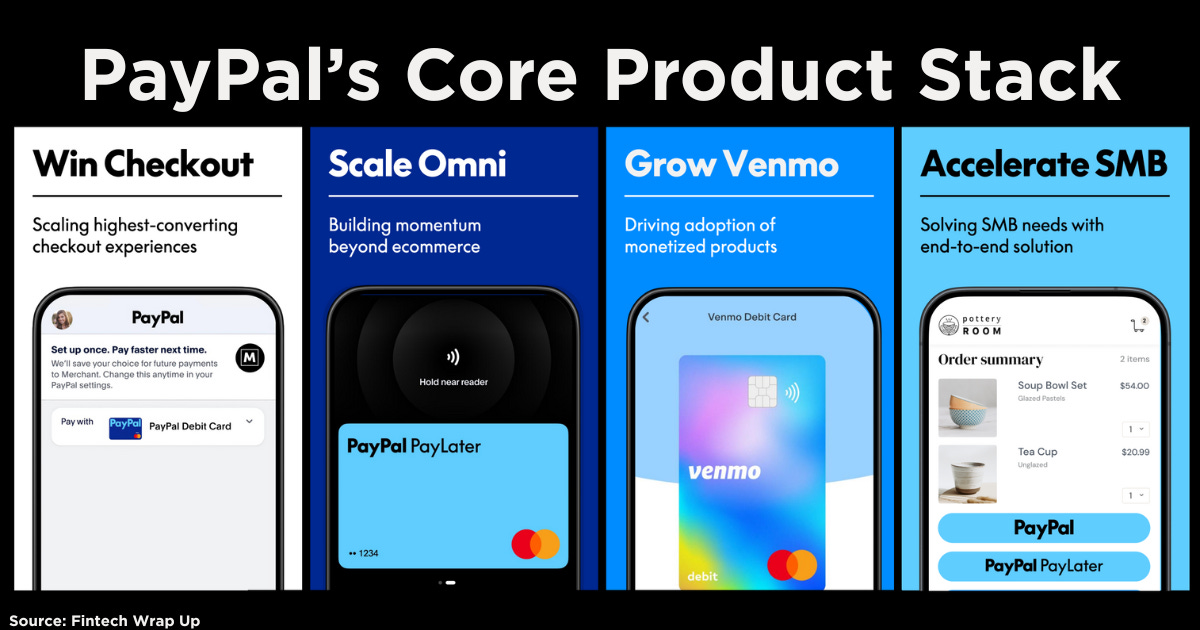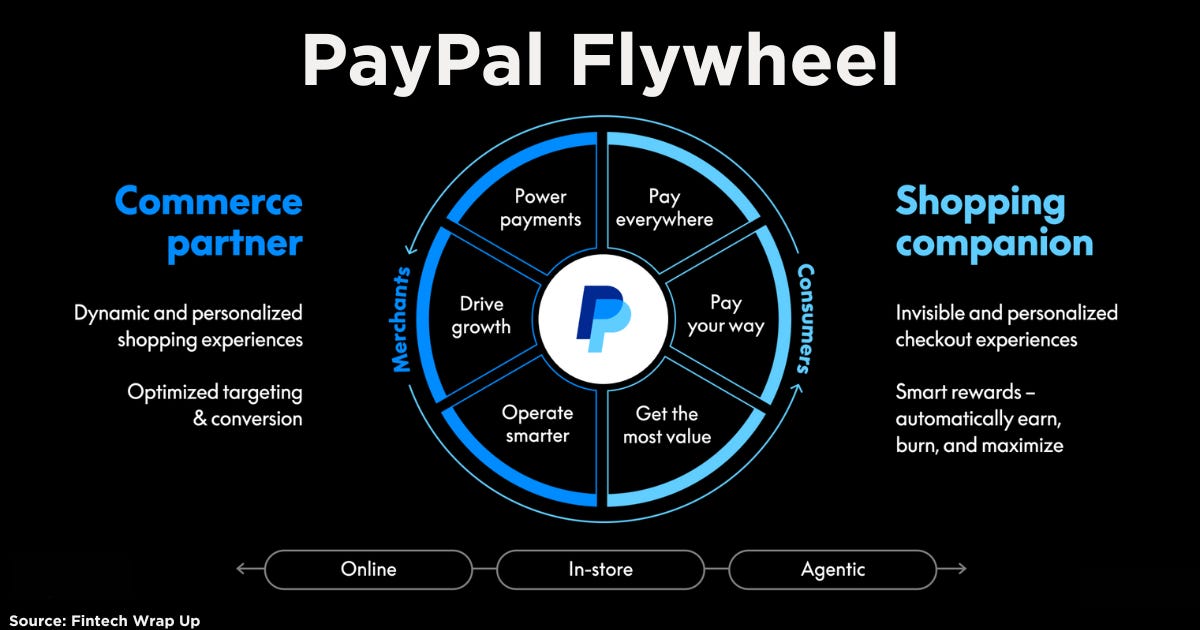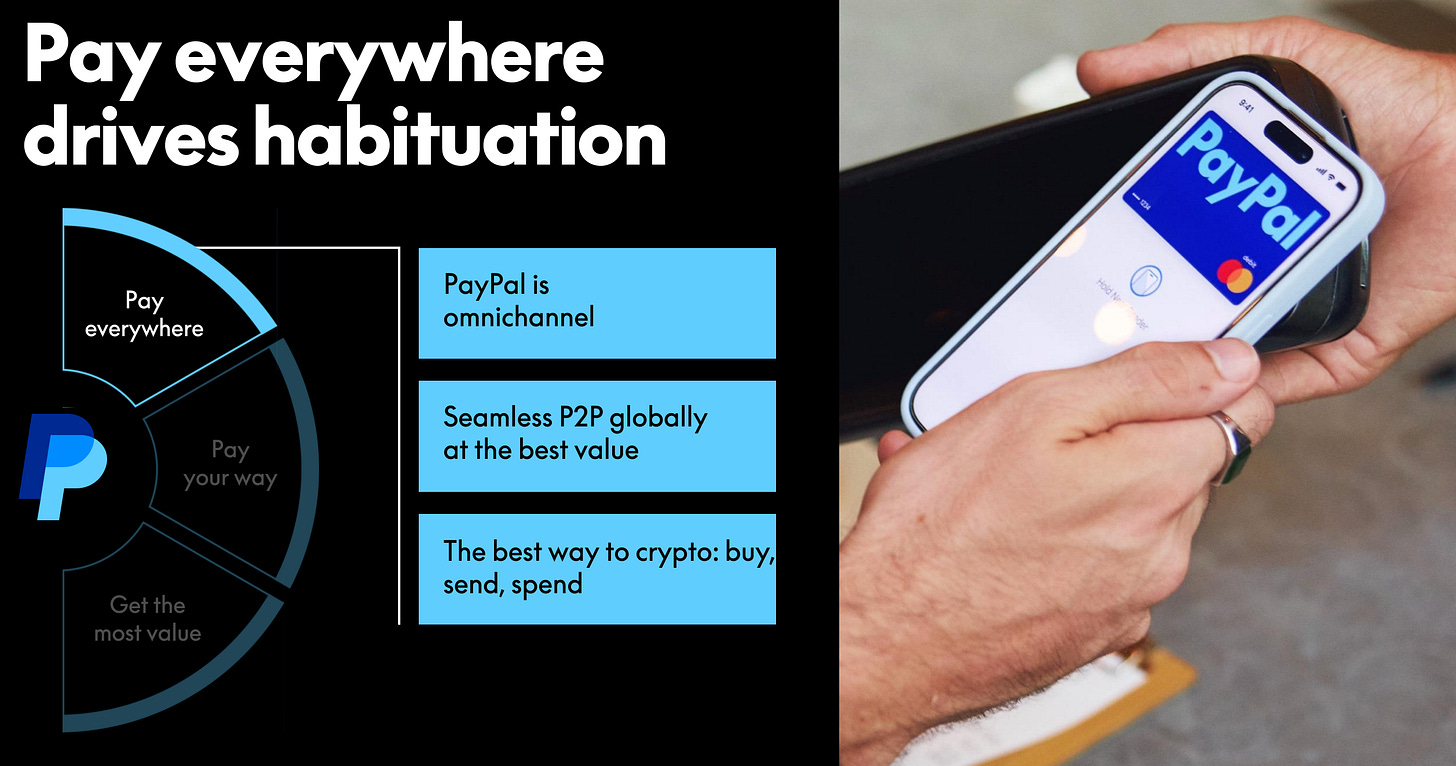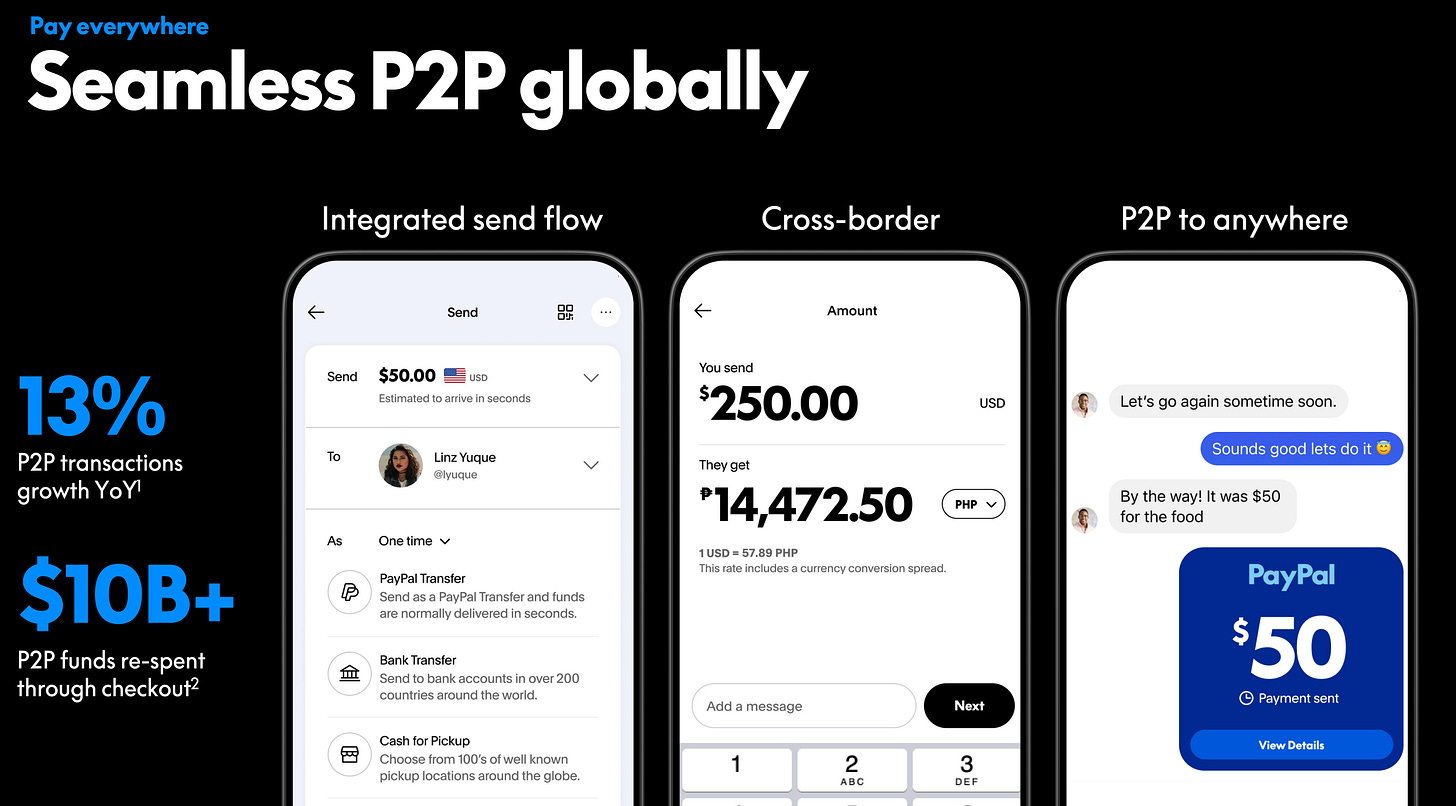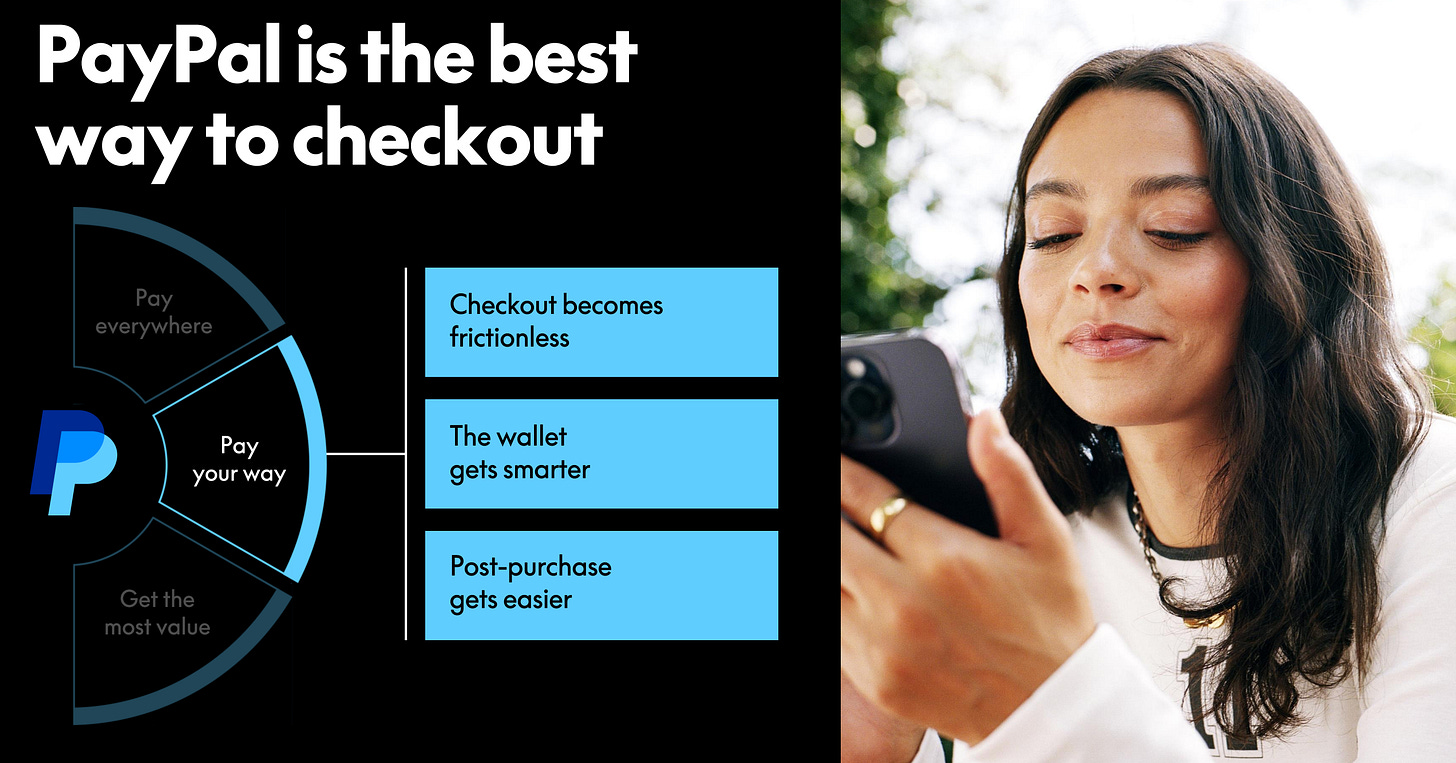Deep Dive: Unpacking PayPal’s Core Product Stack
This deep dive explores how PayPal is modernizing every layer of its core offerings, from consumer wallets and checkout flows to merchant tools and Venmo’s social payments
PayPal is one of the original giants of fintech – with over 430 million customer accounts across more than 200 markets – and it powers roughly a quarter of the world’s e-commerce transactions. Yet even a company of this scale must evolve. In 2025, under new CEO Alex Chriss, PayPal is revamping its core product stack to reignite growth and stay ahead of fast-moving competitors. This deep dive explores how PayPal is modernizing every layer of its core offerings, from consumer wallets and checkout flows to merchant tools and Venmo’s social payments, all while leveraging its massive two-sided network. The timing is critical: after years of slower growth and rising competition from tech giants and fintech upstarts, PayPal’s new strategy aims to drive durable growth by doubling down on checkout, expanding omnichannel payments, and using AI-driven personalization to deliver more value to both consumers and merchants. In the sections that follow, we’ll examine PayPal’s consumer strategy (spanning branded checkout, omnichannel experiences, rewards and peer-to-peer), the evolution of its checkout technology (including new vaulted and guest checkout experiences), the reinvention of its small business platform under the PayPal Open initiative, Venmo’s monetization roadmap, and future plans from B2B bill payments to stablecoins and AI. Along the way, we’ll highlight the key metrics and financial goals linked to each initiative. The result is a portrait of a fintech incumbent aggressively transforming its product stack – and perhaps its fortunes – in real time.
A “Pay Everywhere” Consumer Strategy
At the heart of PayPal’s game plan is energizing its consumer ecosystem to boost engagement and “selection” – the propensity of users to choose PayPal at checkout. Branded checkout has always been PayPal’s engine of monetization, and every part of the company is now tasked with driving more consumers to select PayPal when they pay. PayPal’s consumer team has zeroed in on a target demographic of young families and professionals in their 30s and 40s with medium to high incomes, who demand convenience and want to make the most of their money. For these users, PayPal aspires to be “the easiest, the safest, and the most rewarding way to pay, send, and save money” – in short, the smartest way to pay. To fulfill that promise, PayPal’s consumer strategy is built on three pillars that Chriss’s team calls “Pay Everywhere, Pay Your Way, and Get the Most Value.”
Pay Everywhere means making PayPal ubiquitous across every channel – online, in-store, peer-to-peer, even crypto. A year ago, PayPal launched “PayPal Everywhere” in the U.S., extending its wallet to offline uses (like tap-to-pay with the PayPal or Venmo debit cards) and seeing strong early results. For example, enabling in-store debit usage not only added payment volume but actually drove more online PayPal checkouts – for every four debit card users, one became an incremental PayPal checkout user. In fact, total payment volume on PayPal’s branded debit card doubled year over year, illustrating the “flywheel” effect when users can pay with PayPal in more places. In 2025, PayPal is expanding these omnichannel capabilities internationally, starting with launching an NFC tap-to-pay wallet in Germany.
Peer-to-peer (P2P) payments remain a cornerstone of PayPal’s consumer ecosystem – not only as a service in itself, but as a user acquisition funnel. About 30% of PayPal’s new active users come in through P2P transfers, and importantly, over $10 billion of funds that people receive via P2P are subsequently spent at merchants via PayPal. In other words, P2P brings new users and keeps them engaged in the PayPal network, where that money can then flow into monetized checkout transactions. PayPal is continuing to innovate in P2P features to maintain its lead. Soon, users will be able to send money internationally directly to bank accounts or mobile wallets, or even to crypto wallets, nearly anywhere in the world – an ability PayPal boasts “only [it] can deliver,” given its global network. Perhaps even more intriguingly, PayPal plans to enable sending payments to anyone via just a phone number or chat handle: “anyone, even outside our network, will be able to receive payments with a text or messenger” through PayPal. This kind of open-loop P2P could extend PayPal’s reach far beyond its own user base. And while on the topic of reach: PayPal is also pushing into crypto as part of “Pay Everywhere.” Having introduced the ability for users to buy, hold, and sell cryptocurrencies, PayPal now reports “explosive growth” in consumers using crypto for transfers and payments. PayPal users can even check out at millions of merchants using their crypto balance, with PayPal handling the on-the-fly conversion. By integrating crypto into its wallet, PayPal hopes to be the place consumers “won’t want to do crypto anywhere else”, bridging traditional and on-chain payments under its trusted brand.
Pay Your Way is the second pillar, focused on flexibility and ease of use. PayPal knows that a fast, frictionless checkout is vital – “checkout has to be fast”, as the team puts it – but they’re pushing the concept further with innovative new experiences. One big initiative is introducing “new vaulted checkout experiences” that make PayPal nearly invisible during payment. In practice, “vaulted” means a user can pre-authorize and save PayPal as a preferred payment method in a given context (for example, in a ride-sharing app or food delivery app) so that future transactions happen with one tap, without repeated logins. PayPal is encouraging developers to pre-vault PayPal during user onboarding and enable frictionless in-app payments, particularly for high-frequency, low-value purchases. By being present (and pre-selected) at the moment a new user signs up for a service, PayPal can become the default way to pay for rides, meals, tickets and other everyday purchases – an approach that drives dramatically higher conversion and usage. For most e-commerce scenarios, PayPal still supports its classic “one-time” checkout integrations, but for certain mobile-first use cases with average tickets under $40, these vaulted payments flows are recommended to make PayPal as seamless as Apple Pay or a saved card. In addition, PayPal is rolling out modern authentication like passkeys (biometric logins) across its consumer apps, eliminating the annoyance of passwords and cutting login friction to near zero. The new PayPal checkout flow leverages passkeys so users can log in with a face or fingerprint and pay with one tap – part of an overhaul that “reduces latency by as much as 50%” and lets customers check out twice as fast as before. Speed is a feature, and PayPal is finally treating it as such.
Keep reading with a 7-day free trial
Subscribe to Fintech Wrap Up to keep reading this post and get 7 days of free access to the full post archives.


